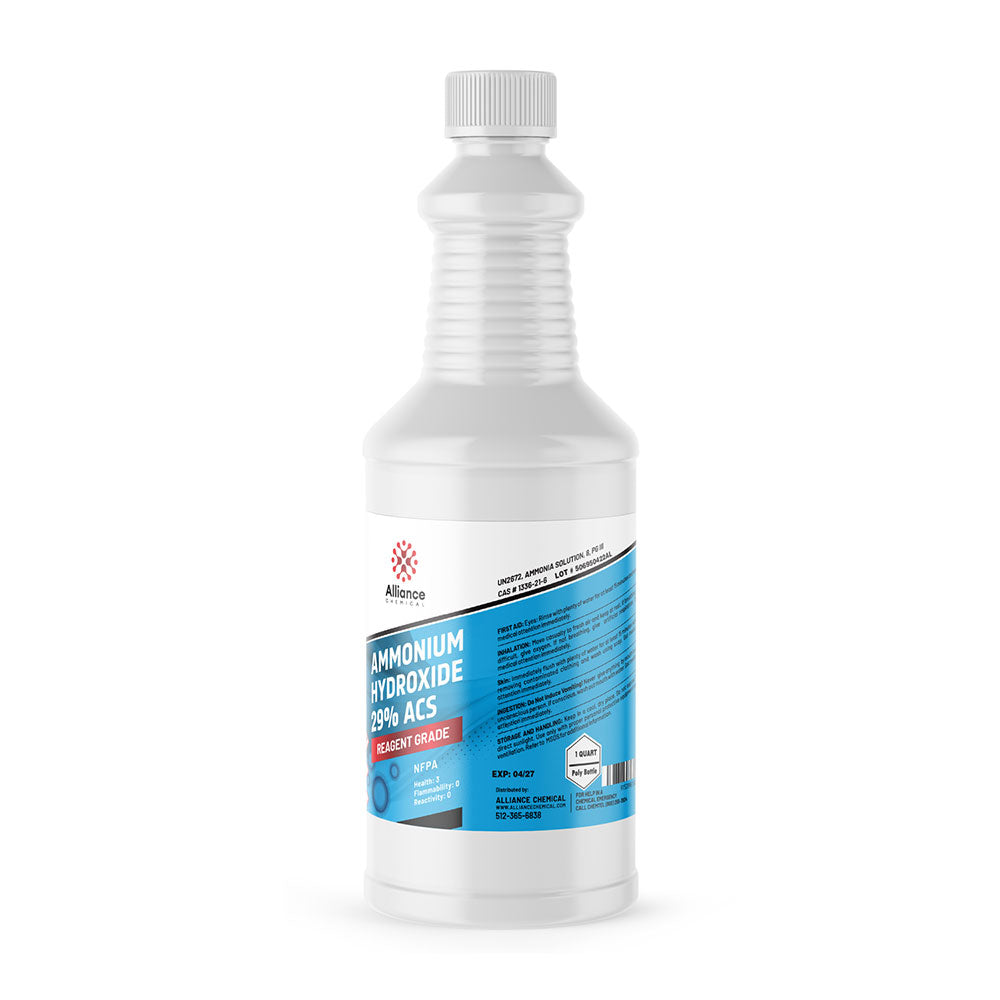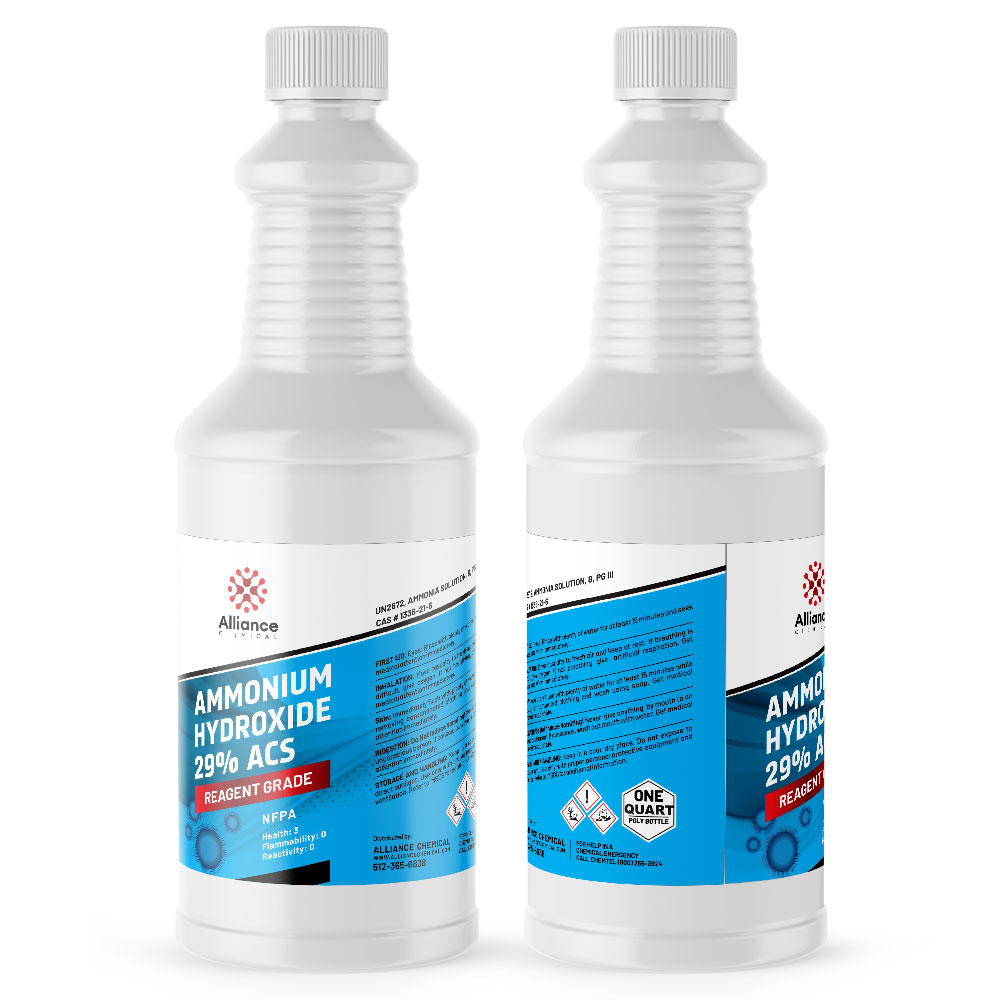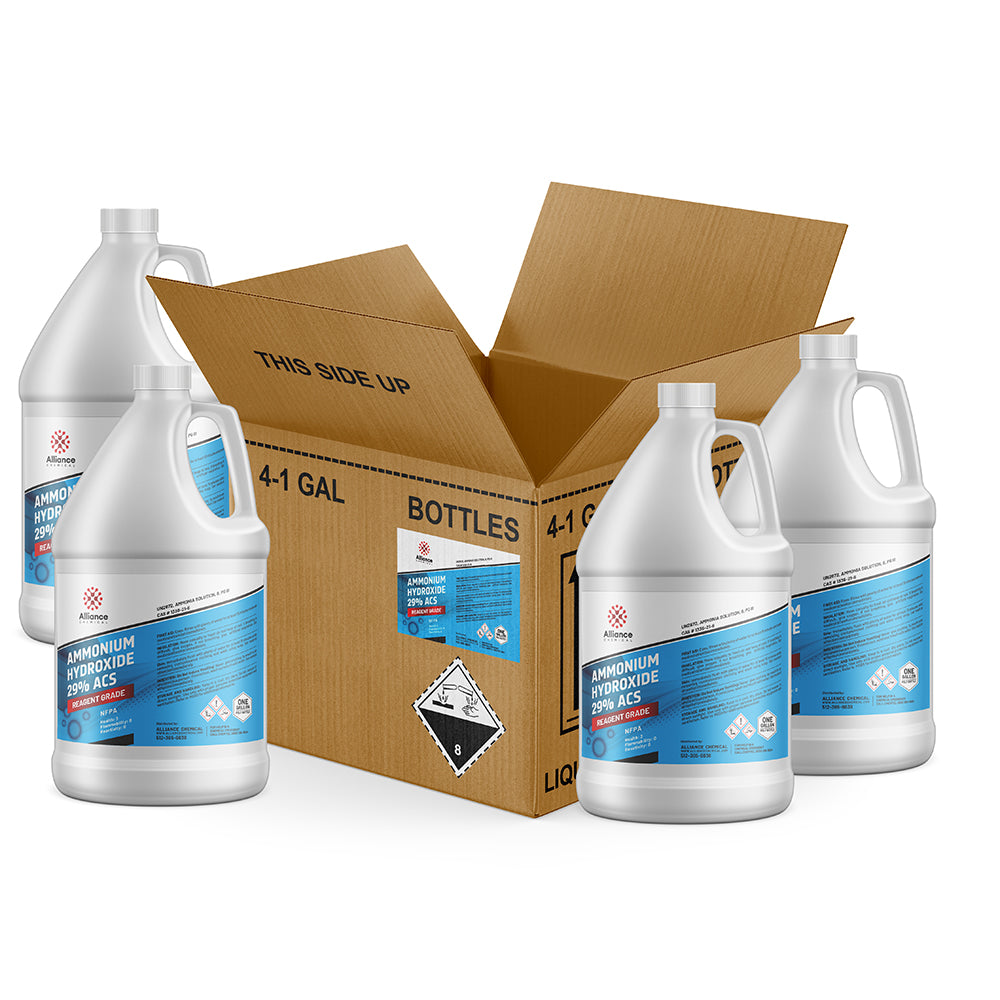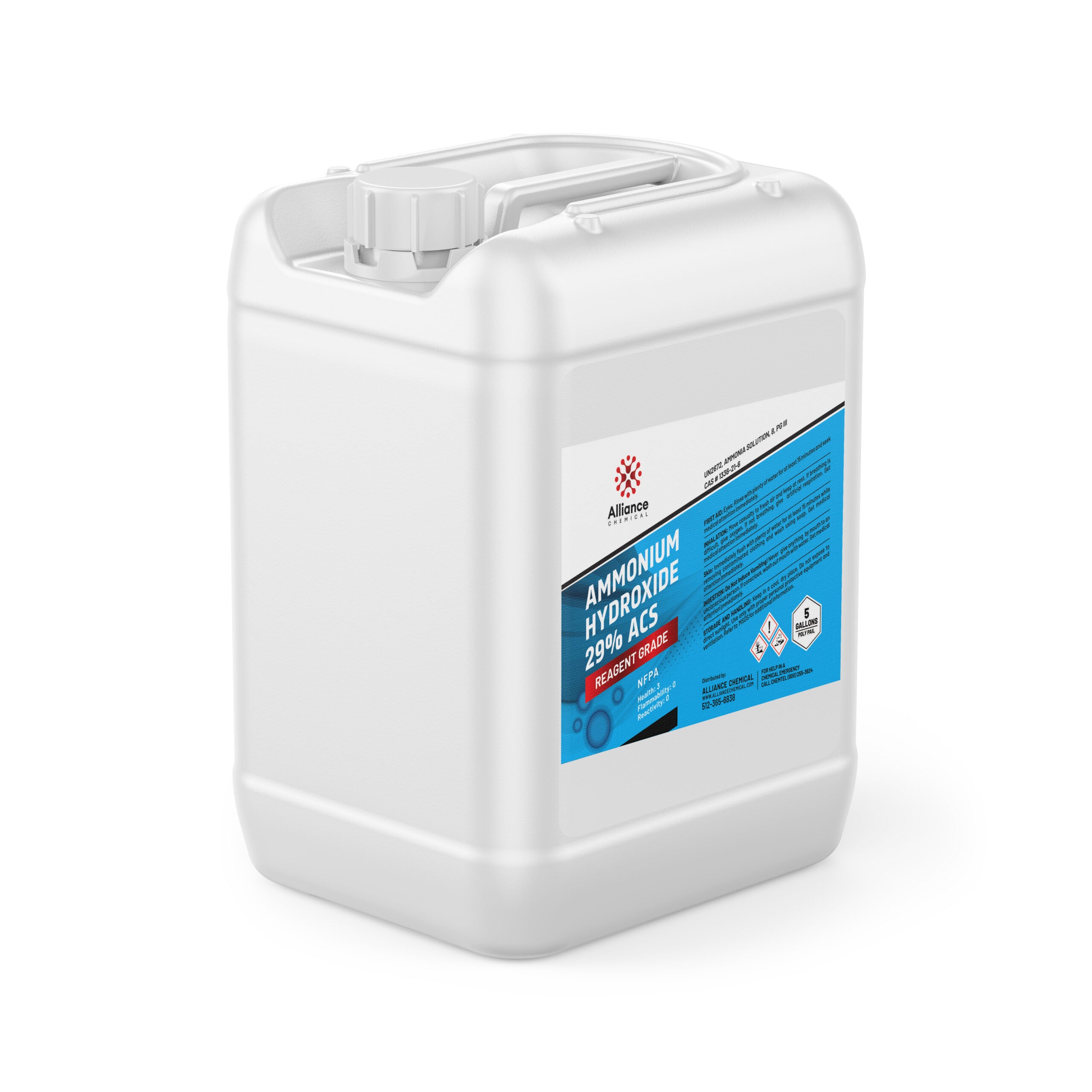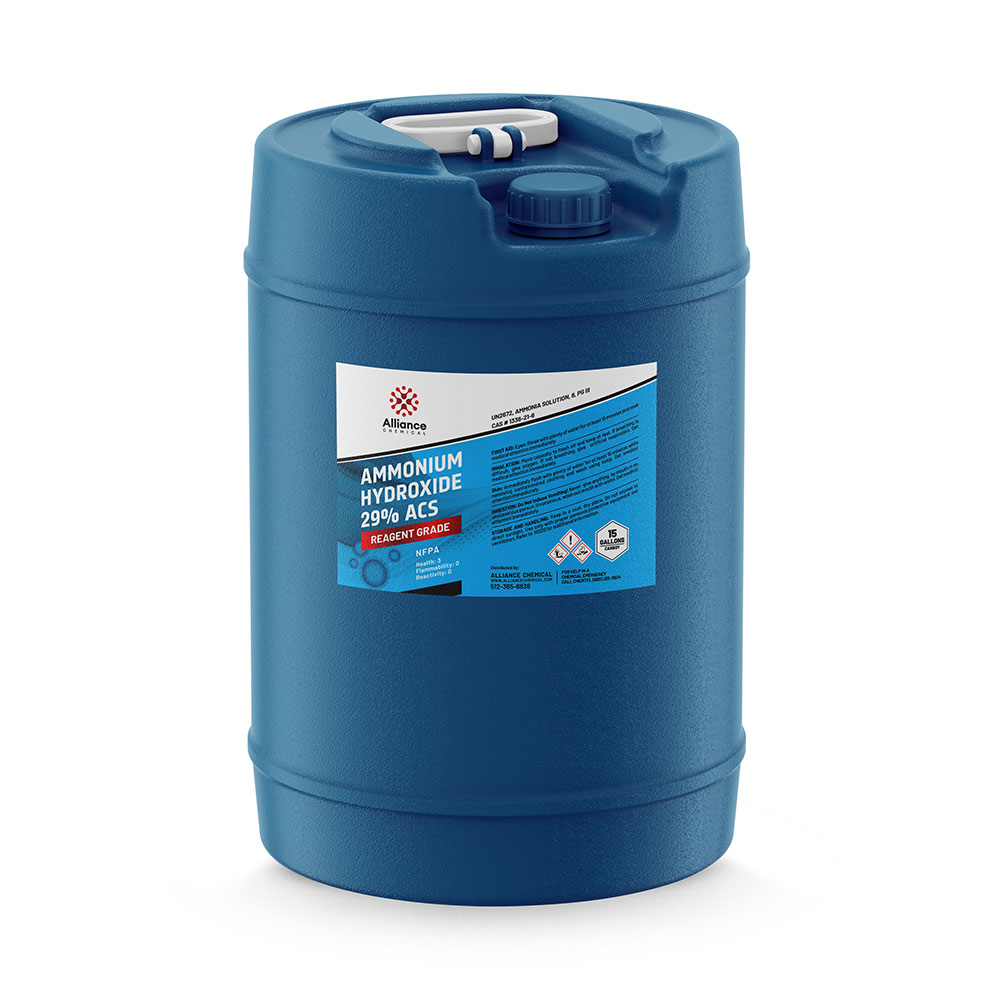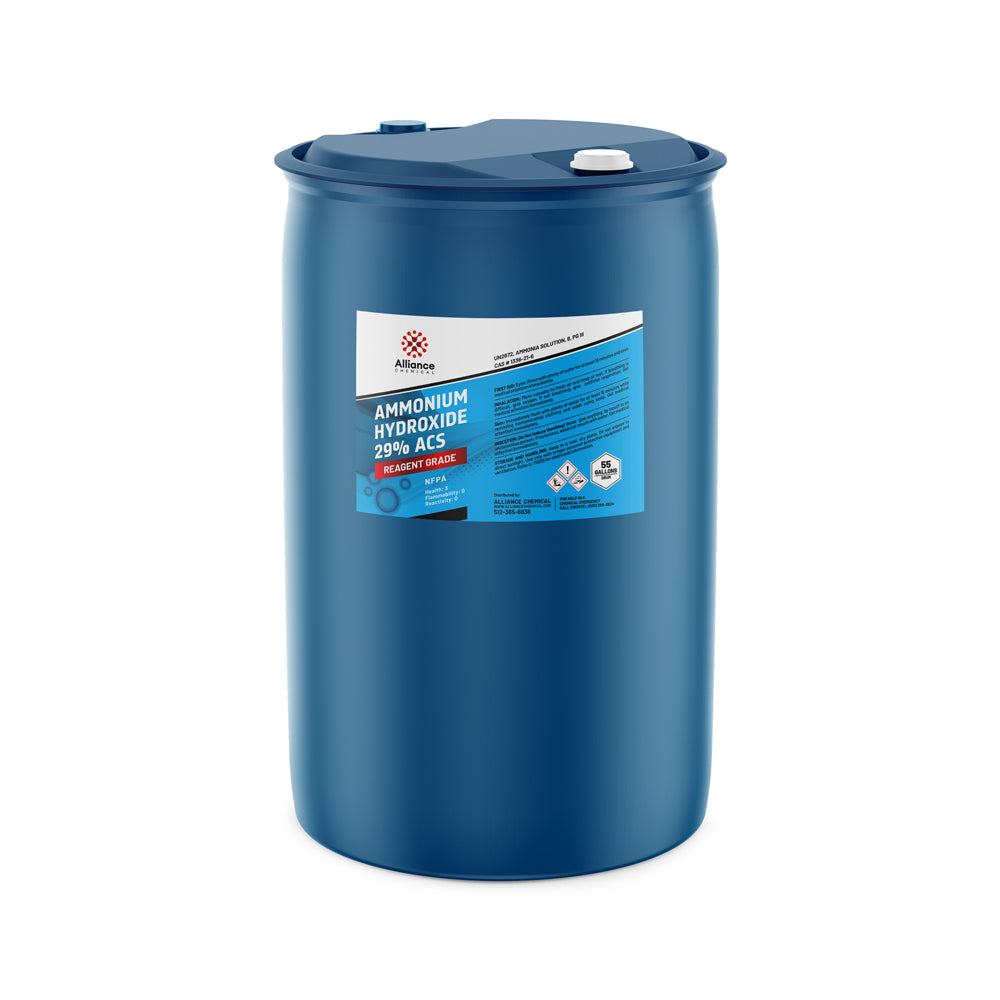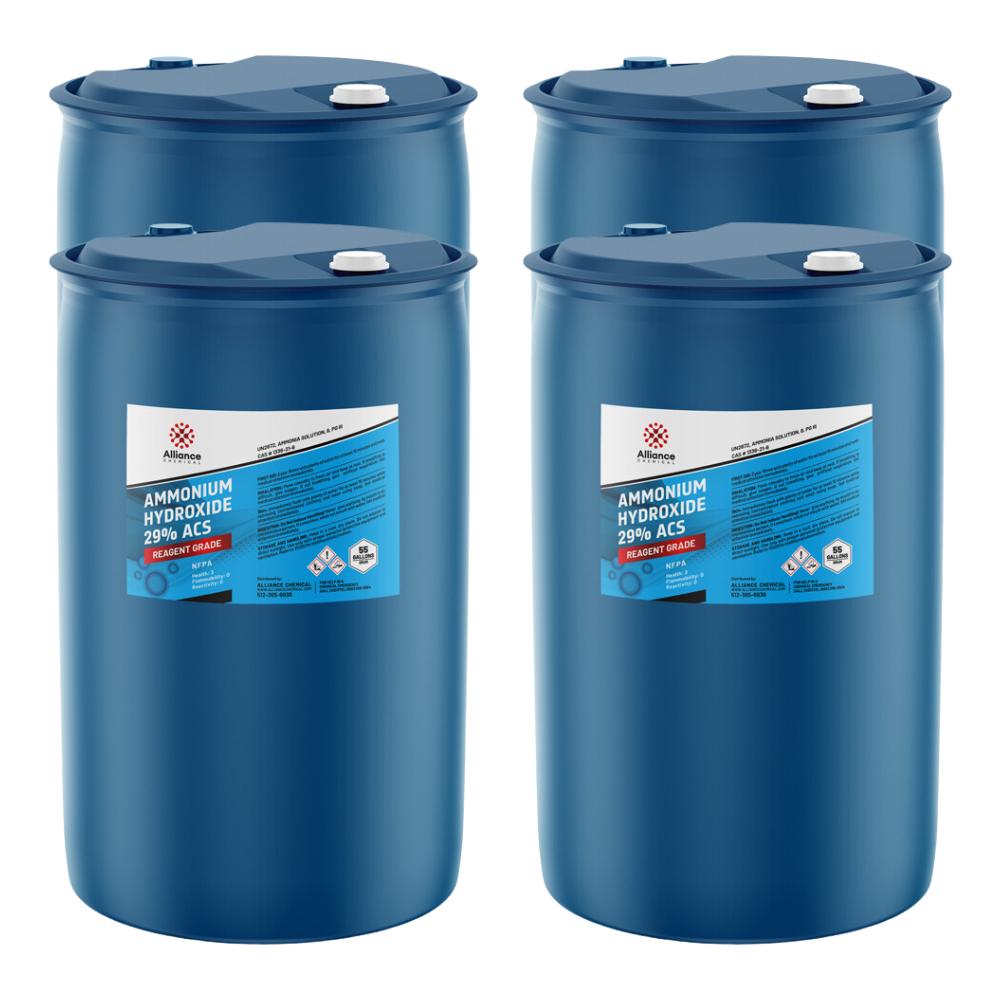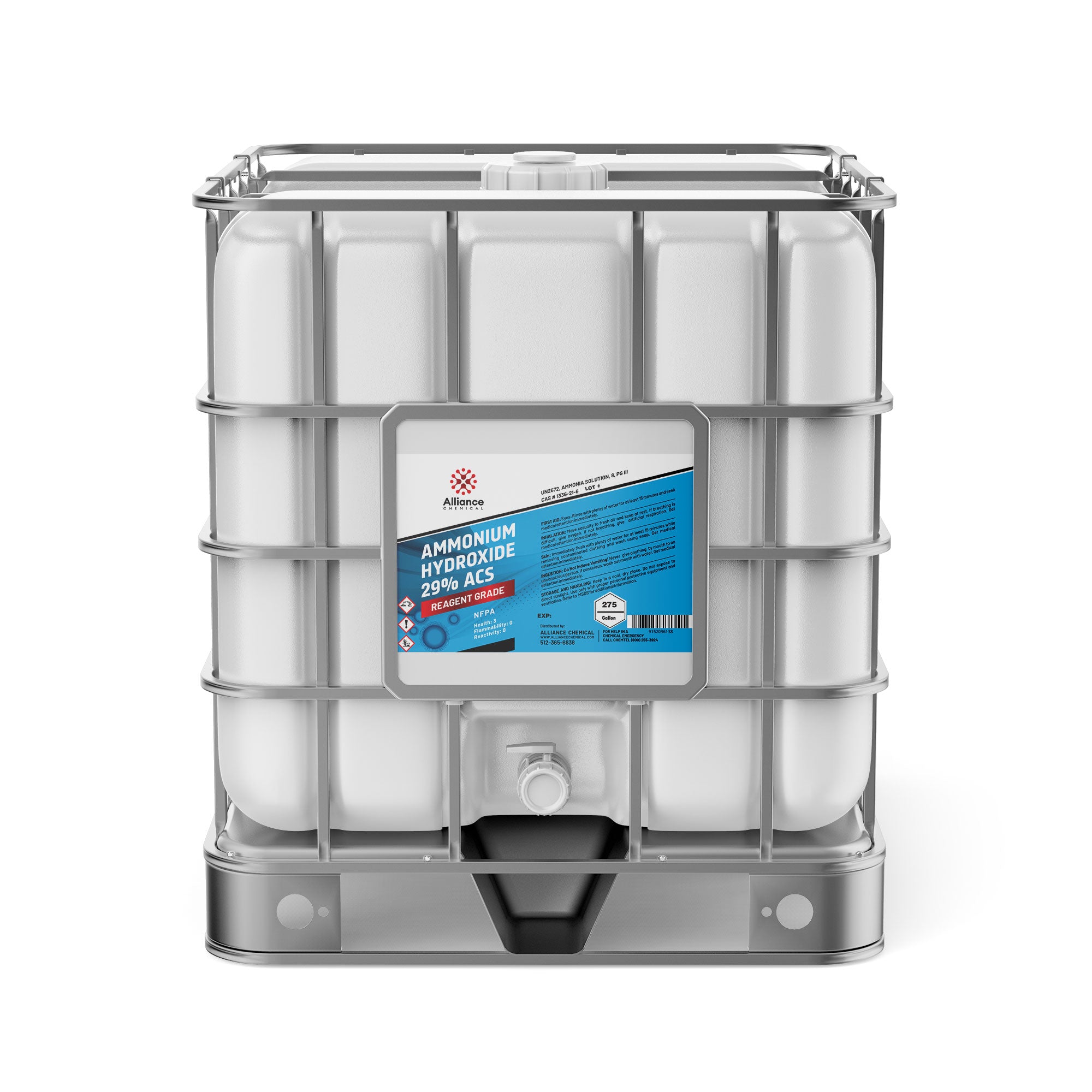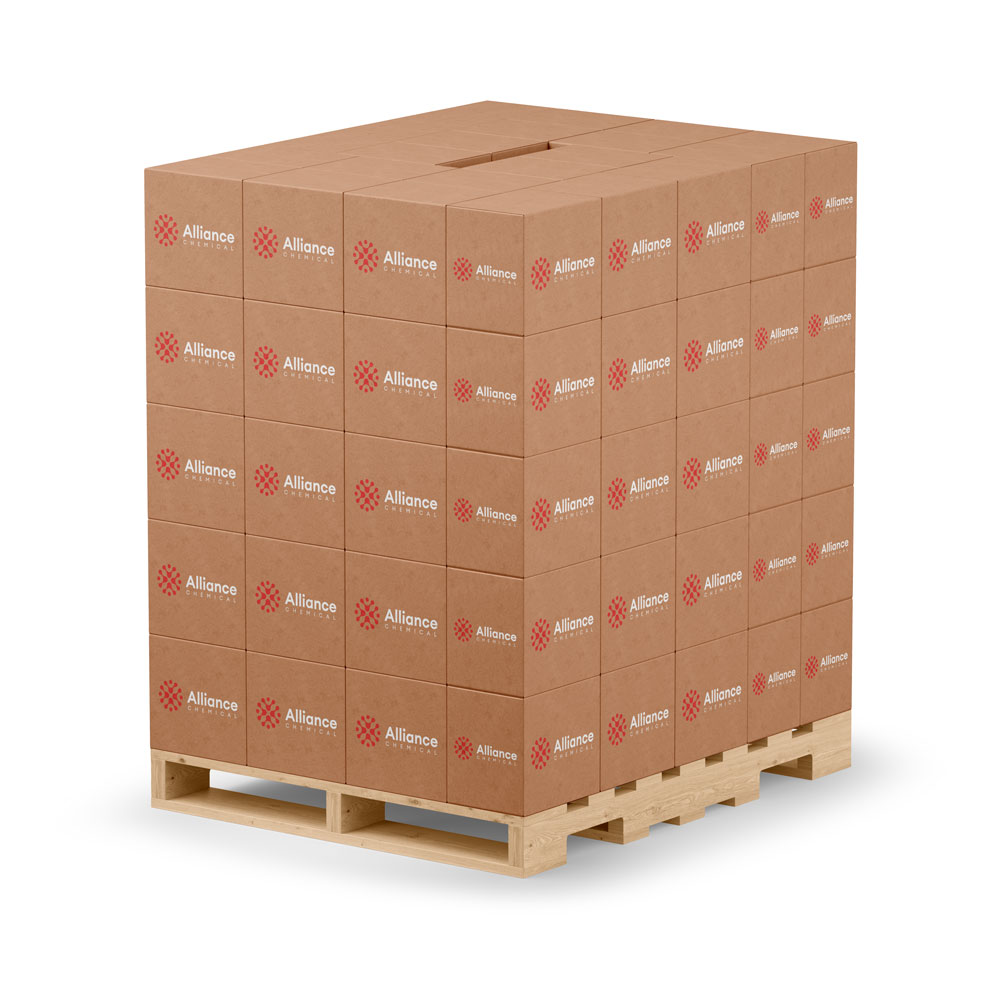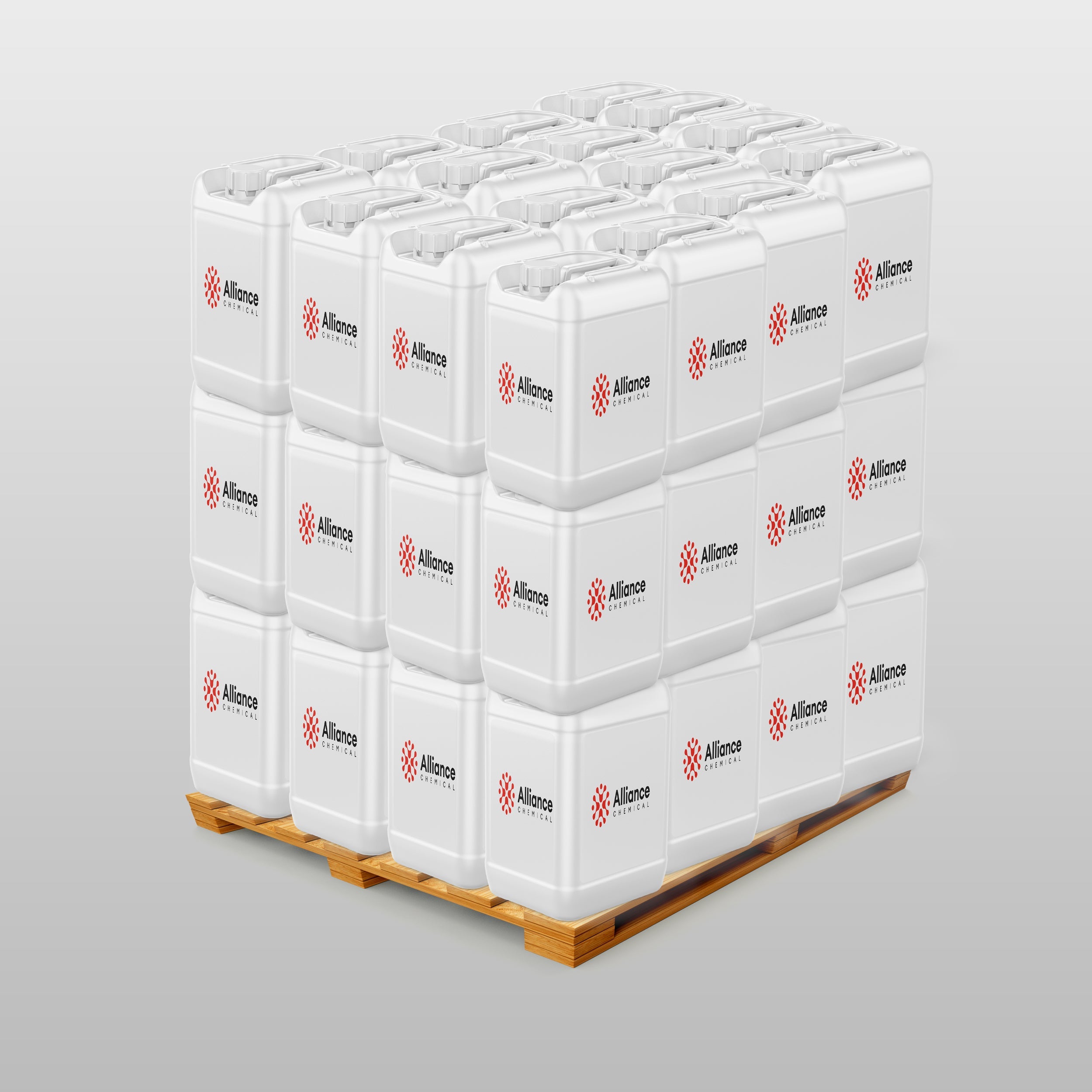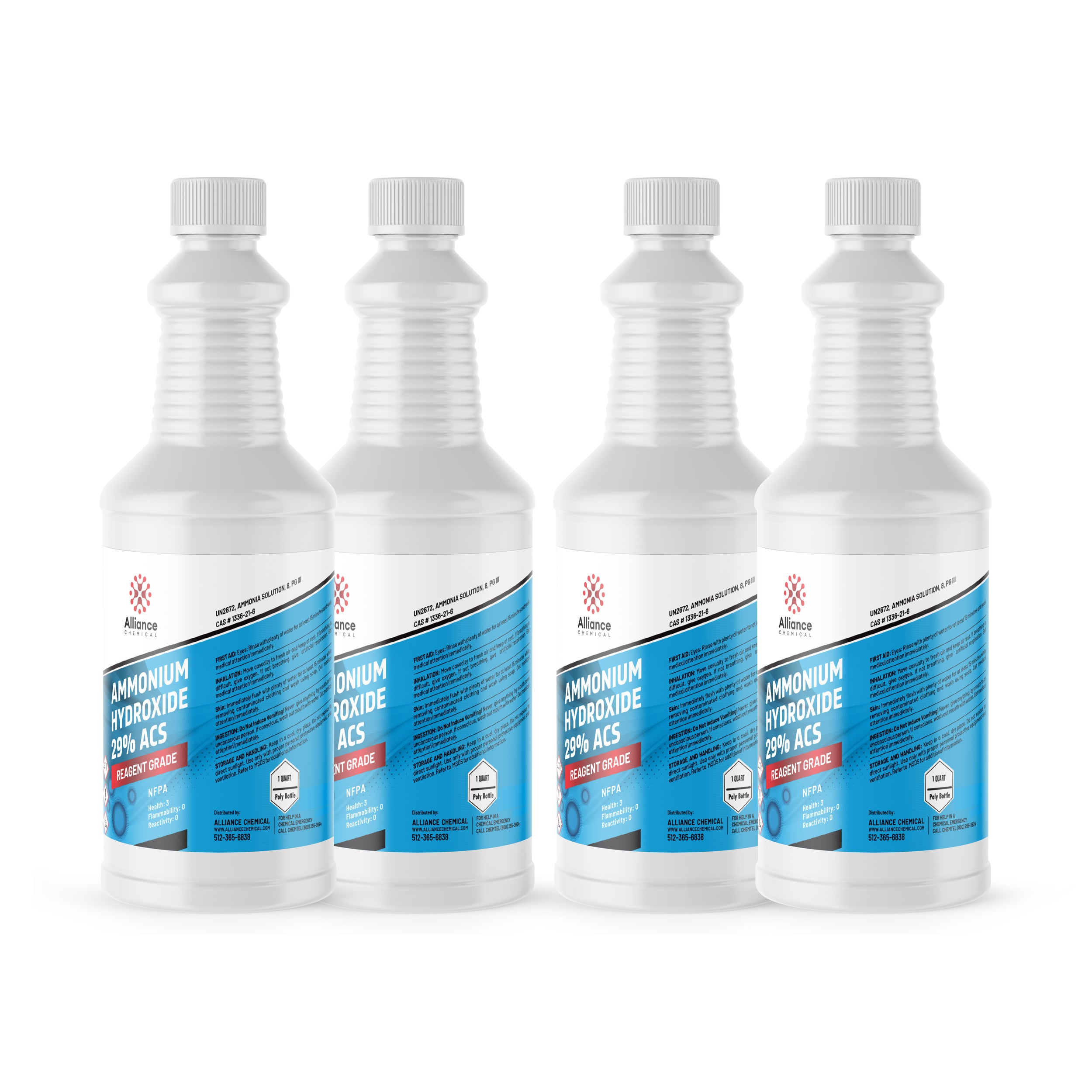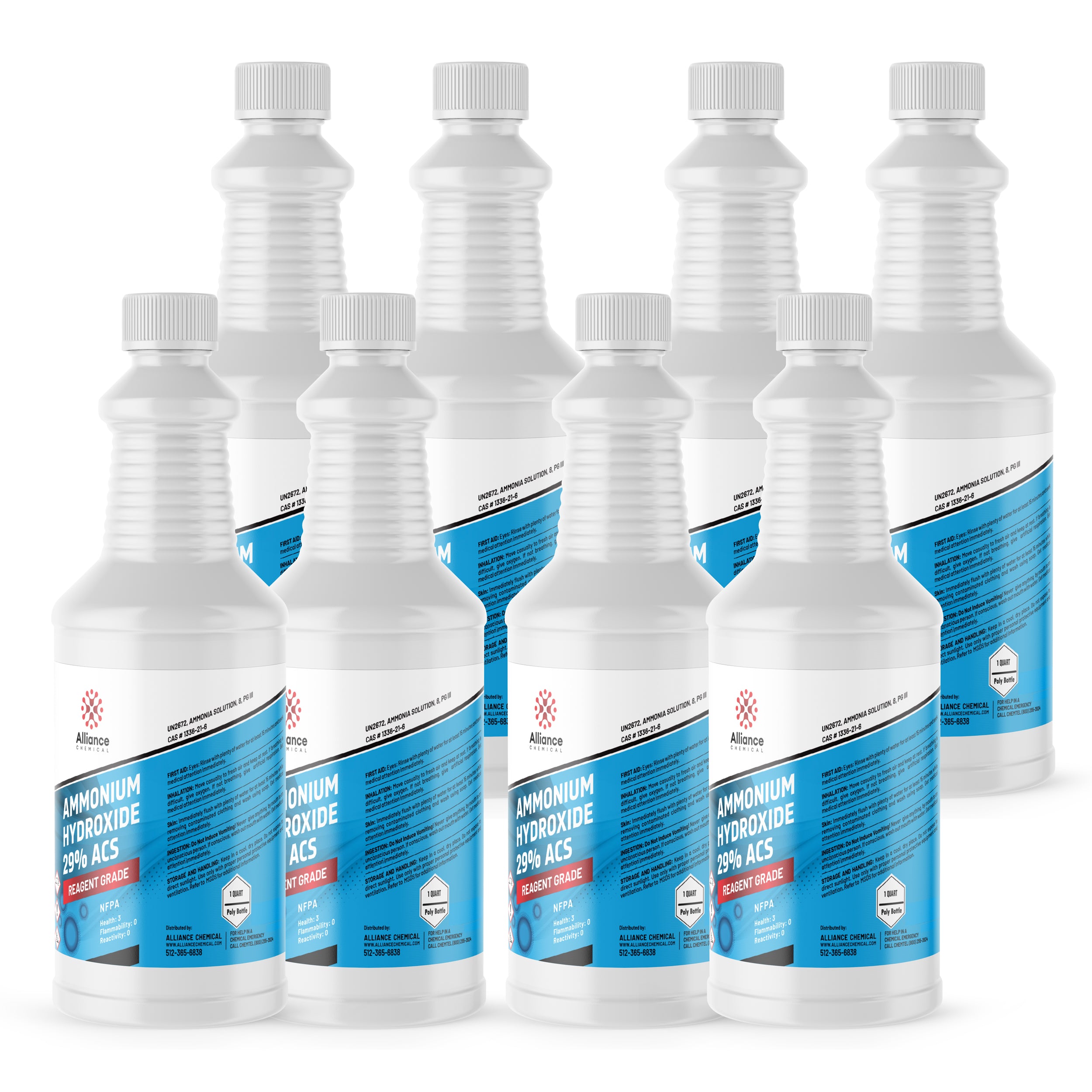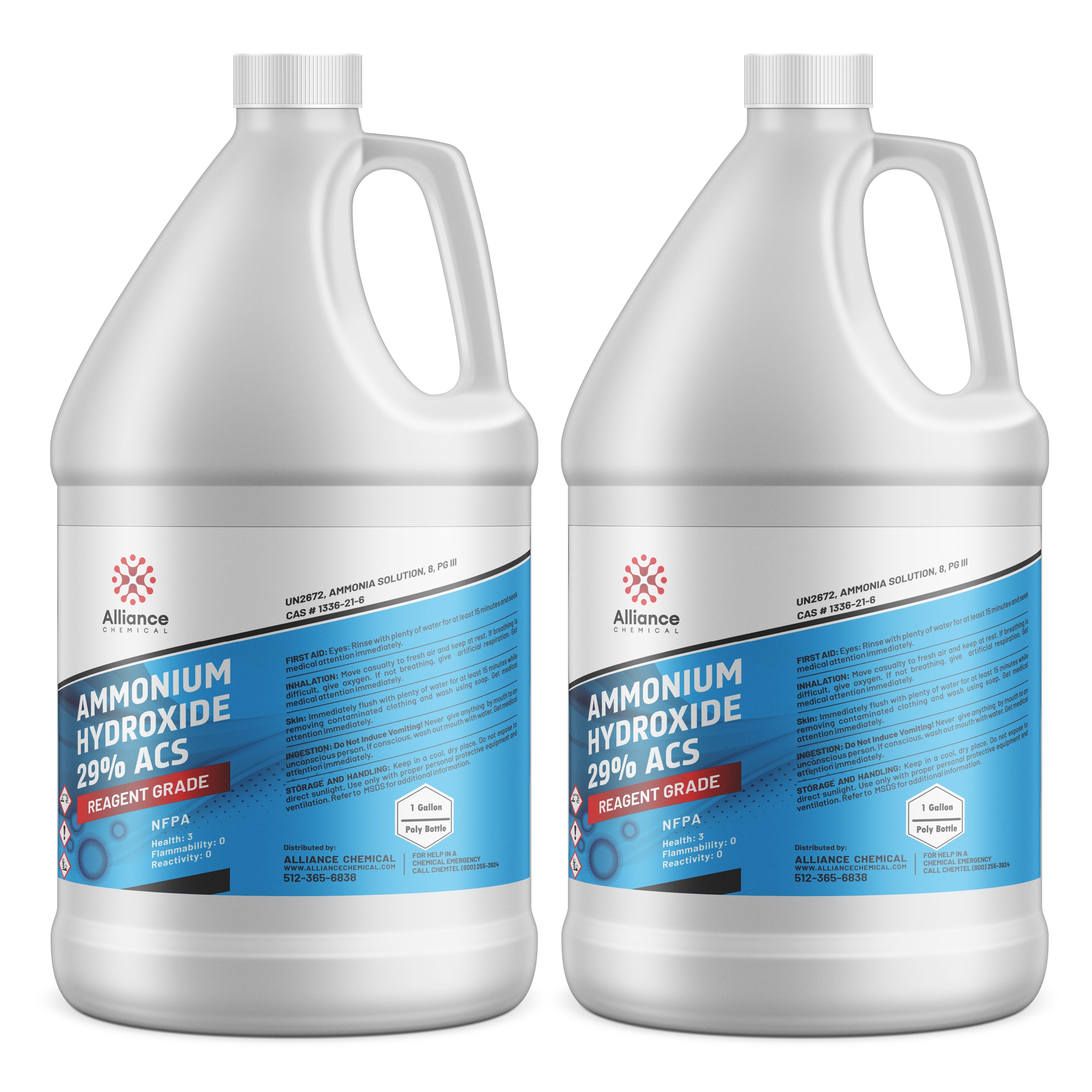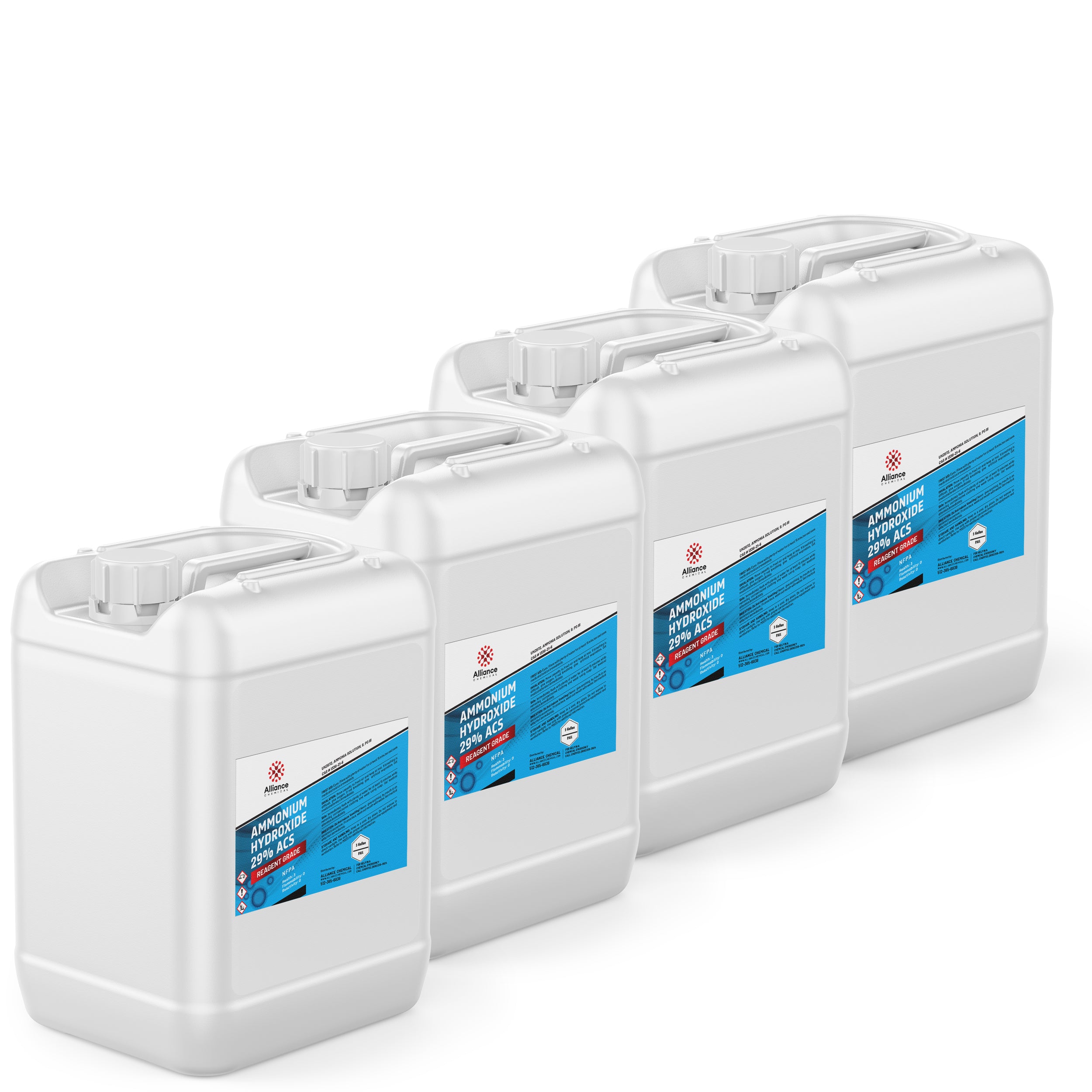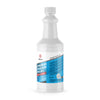Ask a question
Product Overview
Ammonium Hydroxide 29% ACS Grade, also known as Aqueous Ammonia, is a colorless liquid with a pungent odor suitable for a wide range of industrial and laboratory applications. This ACS Grade solution comprises ammonia (NH₃) dissolved in water to provide a concentrated alkaline reagent with high buffering capacity. The product is formulated to deliver precise dosing and consistency for pH adjustment, neutralization, and chemical synthesis steps where strict purity and known assay characteristics are required. Typical assay values place the solution at approximately 29% w/w NH₃, with a corresponding density near 0.899 g/mL at 20°C, enabling accurate volumetric and gravimetric measurements in process control and analytical workflows. The high purity and low impurity profile minimize interference in analytical methods and downstream reactions, aligning with ACS Reagent and USP-NF monograph expectations.
In addition to its role as a strong alkaline reagent, ammonium hydroxide serves as a versatile precursor in chemical synthesis, a cleaning agent for degreasing and equipment sanitation, and a laboratory reagent for various titration protocols. Its compatibility with aqueous systems, solvent properties, and readily available commercial supply support robust process development and routine maintenance across water treatment, pharmaceutical, and industrial cleaning applications. Proper handling and storage in appropriate containers help preserve concentration stability and minimize vapor release, ensuring safe integration into controlled process environments.
Key Properties
- Appearance: Colorless liquid
- Chemical Formula: NH₃
- Molecular Weight: 35.05 g/mol
- Boiling Point: 36°C
- Specific Gravity (20°C): 0.895–0.905 (typical 0.899)
- Residue After Ignition: Max 0.05% (typical 0.01%)
- Chloride: Max 0.5 ppm (typical 0.2 ppm)
- Nitrate NO₃⁻: Max 1 ppm (typical 0.5 ppm)
- Ammonium NH₄⁺: Max 10 ppm (typical 3 ppm)
- Sulfate SO₄²⁻: Max 2 ppm (typical 1 ppm)
- Phosphate PO₄³⁻: Max 2 ppm (typical 1 ppm)
- Arsenic As: Max 0.01 ppm (typical 0.003 ppm)
- Heavy Metals (as Pb): Max 0.5 ppm (typical 0.1 ppm)
- Iron Fe: Max 0.2 ppm (typical 0.05 ppm)
- Copper Cu: Max 0.2 ppm (typical 0.05 ppm)
- Manganese Mn: Max 0.5 ppm (typical 0.1 ppm)
- Nickel Ni: Max 0.3 ppm (typical 0.05 ppm)
- Lead Pb: Max 0.2 ppm (typical 0.05 ppm)
- Zinc Zn: Max 0.5 ppm (typical 0.1 ppm)
- Aluminum Al: Max 0.5 ppm (typical 0.1 ppm)
- Chromium Cr: Max 0.5 ppm (typical 0.1 ppm)
- Cobalt Co: Max 0.1 ppm (typical 0.02 ppm)
- Calcium Ca: Max 2 ppm (typical 0.5 ppm)
- Magnesium Mg: Max 2 ppm (typical 0.5 ppm)
- Potassium K: Max 1 ppm (typical 0.3 ppm)
- Sodium Na: Max 1 ppm (typical 0.3 ppm)
- Water Content: Max 0% (typical 0%)
- pH (1% solution): Typically highly alkaline (adjusted by assay)
Common Applications
- Application Category: pH Adjustment – Used to raise the pH of process water and neutralize acidic streams in Water Treatment applications, enabling controlled alkalinity management and corrosion control.
- Application Category: Chemical Synthesis – Acts as a precursor in the synthesis of various pharmaceutical and specialty chemicals, providing a consistent ammonia source for reaction pathways that require basic conditions.
- Application Category: Cleaning Agent – Integrated into industrial cleaning formulations for degreasing and inorganic residue removal, leveraging ammonia’s solubility and volatile cleansing properties.
- Application Category: Laboratory Reagent – Widely used in analytical chemistry as a reagent in titrations, calibration procedures, and preparation of buffered solutions, with trace impurity control per ACS standards.
- Application Category: Fertilizer Component – Incorporated into nutrient formulations to supply nitrogen and adjust solution chemistry in hydroponics and soil amendment systems.
Safety Precautions
Handling and storage should follow established safety practices for corrosive alkali solutions. Store in a cool, well-ventilated area away from oxidizers and incompatible materials. Use containers made of HDPE or glass and ensure sealed, corrosion-resistant closures. Keep container tightly closed when not in use; avoid exposure to heat and direct sunlight to minimize evaporation of the ammonia component. Wear appropriate PPE including chemical-resistant gloves, splash-resistant goggles or face shield, and a lab coat or apron. Ensure adequate ventilation during handling to minimize inhalation exposure and implement local exhaust ventilation in work areas where routine handling occurs.
Additional safety considerations include maintaining stable concentrations to prevent vapor buildup, following proper procedures for spills and leaks, and consulting the SDS for emergency procedures and first-aid guidance. In case of contact with skin or eyes, rinse promptly with copious water and seek medical attention if irritation or damage occurs. For inhalation exposure, move to fresh air and seek medical evaluation if symptoms persist. Do not induce vomiting if ingested; seek immediate medical help. Transport and labeling should adhere to UN 2672 guidelines for ammonia solution; maintain appropriate segregation from incompatible materials during storage and transport.
Benefits
✔ High Purity ACS Grade – Meets or exceeds ACS Reagent Grade specifications, ensuring minimal impurities that could interfere with analytical methods and reactions.
✔ Consistent Assay and Density – Well-defined assay range (29% w/w NH₃) with a documented specific gravity around 0.899 at 20°C, supporting reliable dosing and process control.
✔ Low Impurity Profile – Trace impurity levels in heavy metals, chlorides, and anions are tightly controlled, reducing analytical interference and off-target reactions.
| Property | Value |
|---|---|
| Molecular Weight | 35.05 g/mol |
| Formula | NH4OH |
| Assay | 29% |
| Grade | ACS |
| Flash Point | Not applicable |
| Form | Liquid |
| Solubility | Complete water miscibility |
| Appearance | Clear, colorless, volatile alkaline liquid |
| Melting Point | -58 °C |
| Boiling Point | 37 °C |
| Specific Gravity | 0.88 |
| Industry | Industrial, Environmental, Wastewater |
Compare Products
| Price |
|---|
| SKU |
| Rating |
| Discount |
| Vendor |
| Tags |
| Weight |
| Stock |
| Short Description |

